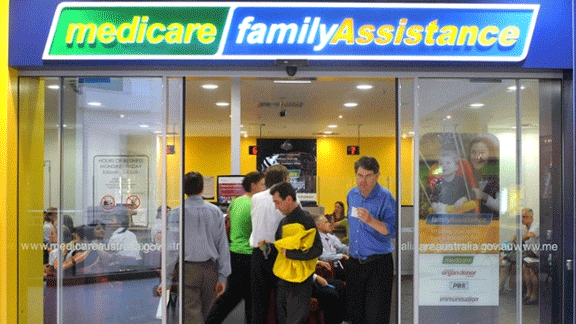Public sector workers vote to strike

An unprecedented attack on pay and conditions has provoked a fight from federal public sector workers. In one of the largest protected action ballots ever conducted, workers at the Department of Human Services (DHS) have overwhelmingly endorsed industrial action as part of enterprise agreement negotiations. A cross-agency rally in Canberra on 6 November was attended by 2,000, with union members in other locations wearing red to work in solidarity.
The moves are a response to the government’s public service bargaining policy, which was first made public in March. The policy mandates cuts to conditions and no pay rise as a starting point in negotiations at each federal public sector department or agency. Any offer on wages must specifically be tied to additional loss of conditions.
At the DHS, workers have been offered a 0.76 percent annual wage rise with major cuts to entitlements. Around 12,000 participated in the protected action ballot, which was carried with a 95 percent majority. The ballot now legally authorises a number of actions, including work stoppages of up to 24 hours. Given the result, it seems likely that union members would have voted for longer actions too, if given the choice. Union membership in the department has risen sharply during the campaign – to around 50 percent.
With workers in all agencies looking at similar offers, other departments are expected to follow suit. The Department of Veterans’ Affairs is currently voting, and others ballots are likely early next year.
Management at the Department of Employment, for example, have made two offers. Both would remove the current 15.4 percent superannuation guarantee while gutting consultation, union rights and other clauses in the name of “streamlining”.
One of the proposed options would slow pay progression, scrap the Christmas Eve half-day close down, delay eligibility for higher duties pay and cut a “healthy lifestyle” allowance – for a pay increase of 0.5-0.6 percent a year. The other option makes all the same cuts but would also add 30 minutes to the work week and reduce staff numbers by 46 – for a wage increase of about 0.9 percent a year.
The rally and protected action ballots are crucial first steps in building a campaign to defend public service pay and conditions. The 2,000 who turned out to protest got a glimpse of our collective power. CPSU national secretary Nadine Flood, the sole speaker at the rally, directly addressed the need for industrial action, albeit with the qualifier that any action would be “strategic” rather than “disruptive”.
It has been clear since March, when the bargaining policy was released, that serious strike action would be needed to get any decent offers on the table. The progress of bargaining has confirmed this. A 1.5 percent wage offer to defence personnel shows that the government is not afraid to make unpopular decisions in the cause of undermining public sector pay. Token actions from our side will not be enough to turn this around.
Ultimately, for all its bravado, the government still needs us. It would quickly rethink its bargaining policy if public servants stopped collecting taxes, prevented imports and exports or stopped assessing new mining applications.
As we build on the momentum of the rally and industrial action ballots, we need to be clear that there is one thing that can protect our pay and conditions – sustained strikes in multiple departments.